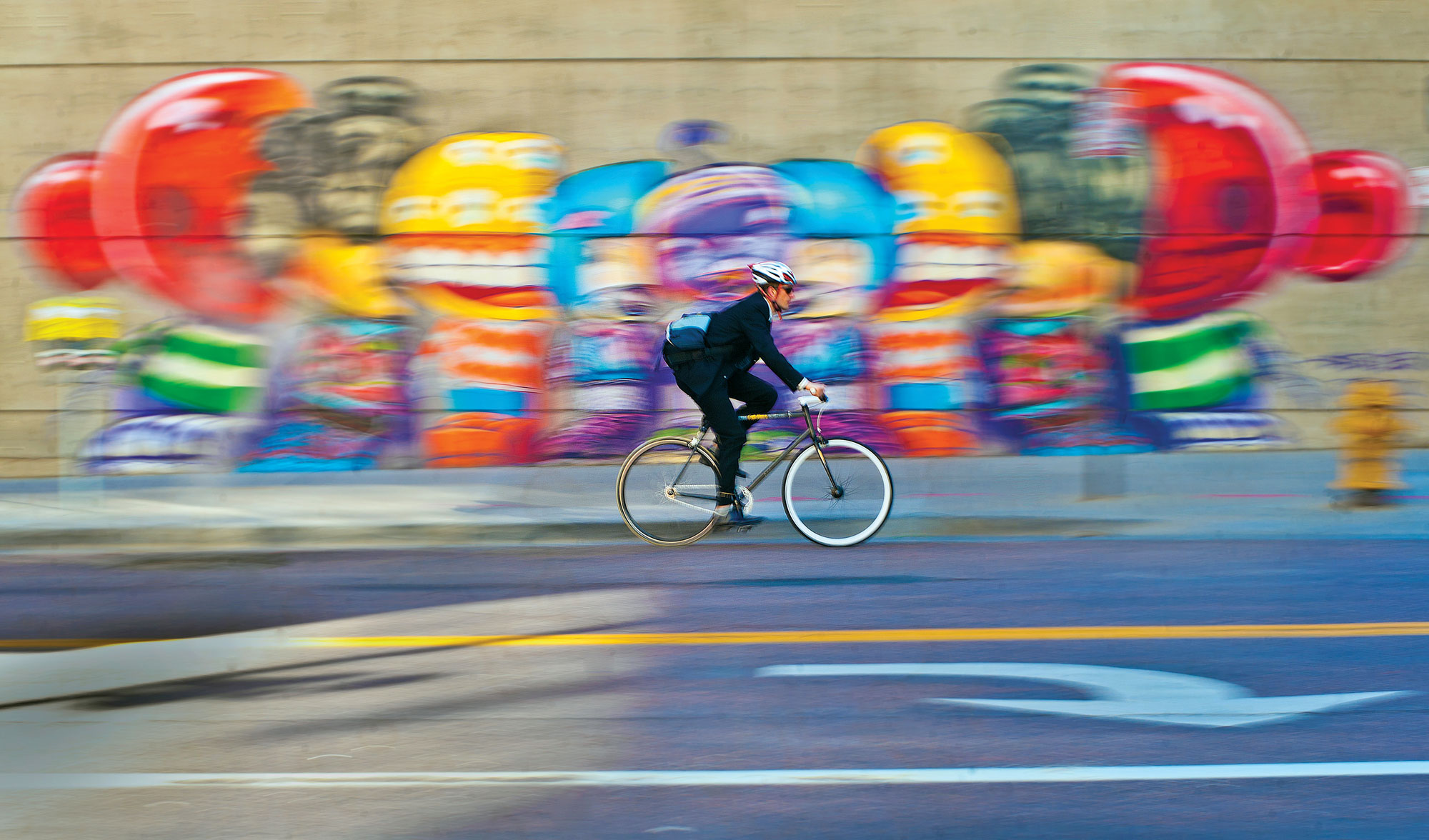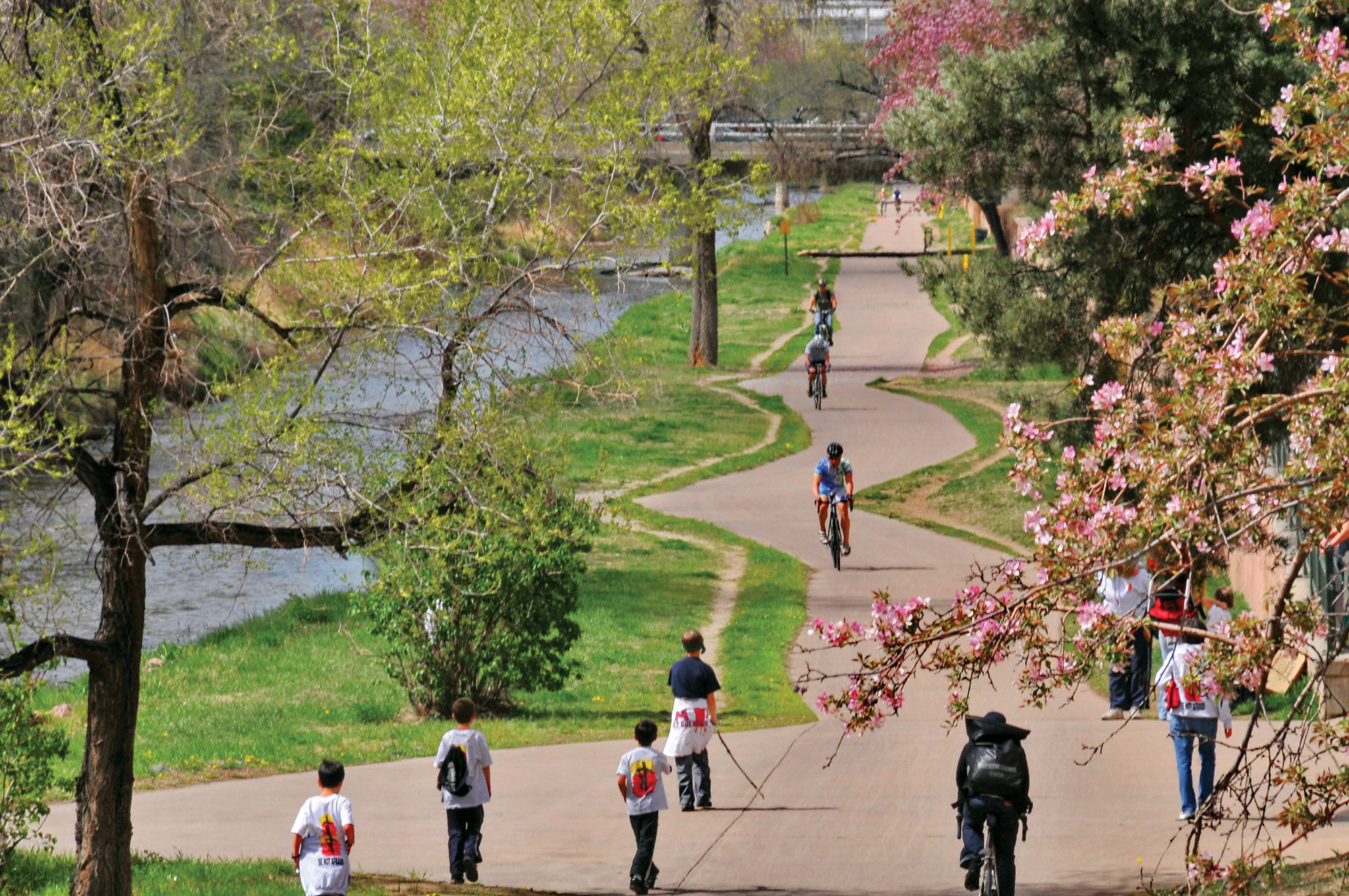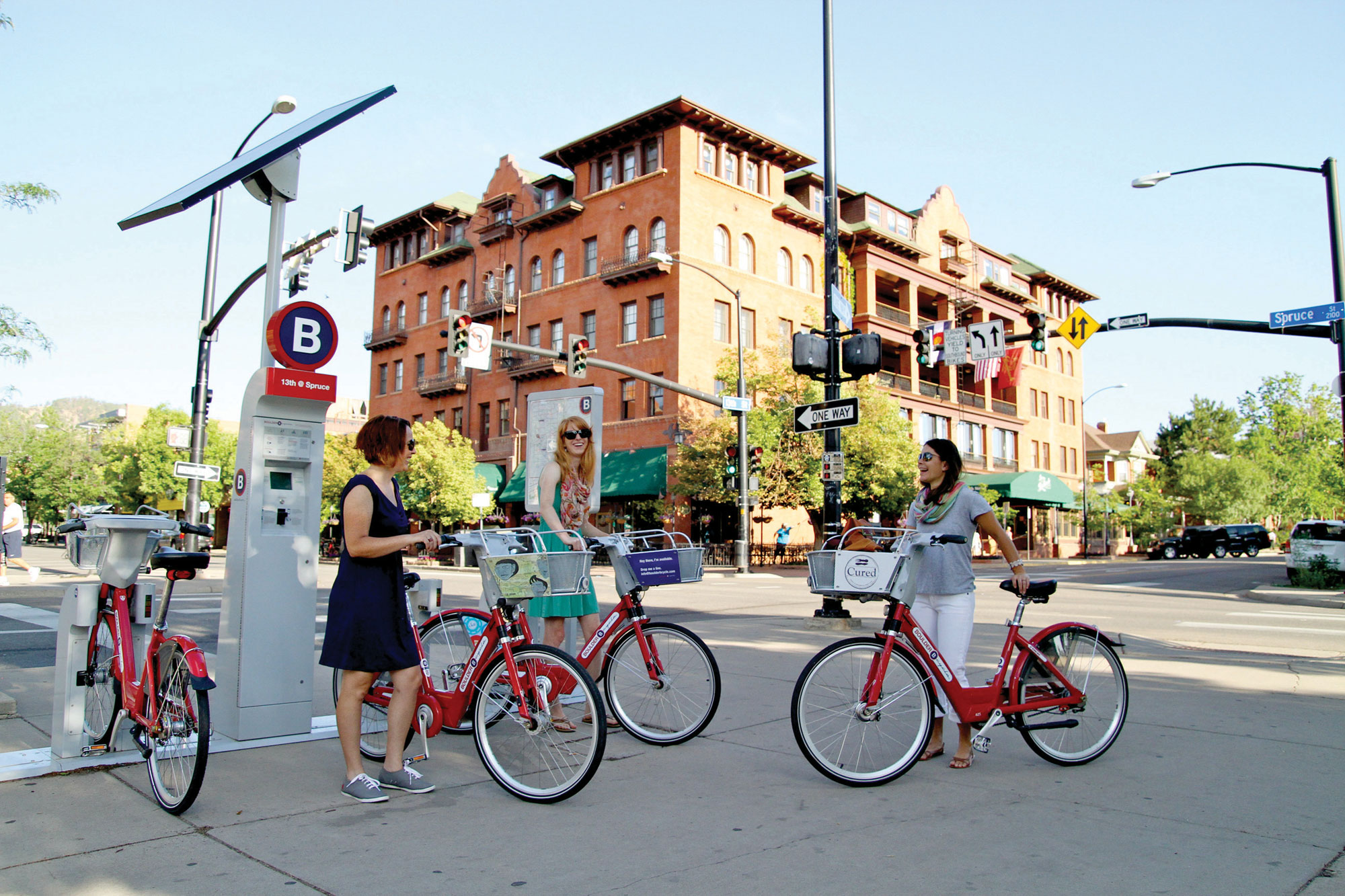Interest and research in driverless and self-parking cars is rapidly growing, as are ideas for how this technology may impact housing development.
By Camilla McLaughlin
The race is on among car manufacturers, tech companies and cities to develop reliable self-driving vehicles and required innovative infrastructure in what is being characterized as the third transportation revolution, one that possibly could have as dramatic of an impact as the automobile. Personal vehicles are only one facet of this future vision. Ride hailing services, shared ownership of cars, autonomous shuttles and buses, and self-driving trucks are all part of the scenario, along with Wi-Fi-enabled infrastructure and roadways that could charge cars.
To illustrate how dramatic the transformation might be, futurist Jack Uldrich uses two photos of Fifth Avenue in Manhattan. In a shot from 1900, horse-drawn vehicles fill the roadway. Thirteen years later, only one horse-drawn vehicle is in evidence, and cars and trucks take up the entire street.
“The transportation revolution will be a game changer for most real estate sectors” is the prediction of Green Street Advisors in a report, The Transportation Revolution: The impact of ride-hailing and driverless vehicles on real estate, prepared for the Urban Land Institute’s fall 2017 meeting.
“Most experts agree that the automobile as we know it will be largely obsolete by 2030. In its place will be fleets of driverless cars that shuttle people safely and efficiently through our city streets. But it’s the broader impacts of this technology that are a game-changer for the future of our cities and the human experience. The opportunity is not only to create new places that accommodate driverless cars, but to reshape our existing cities and towns into the kind of amenity-rich, vibrant places that we all enjoy,” observed architect Andy Cohen, co-CEO of Gensler.
Although a vast array of regulatory and legal challenges need to be addressed, consumer acceptance is considered most pivotal to the broader adaption of autonomous vehicles (AVs). Right now, few consumers have tried self-driving cars. Experts agree acceptance will only come with knowledge and experience.
One analogy often used to illustrate current apprehensions about new technology is the elevator, which initially was considered an incredibly risky innovation. “People didn’t want to get into it. Today, you and I don’t give a second thought to jumping on an elevator, and it whisks us up a hundred stories of a skyscraper. I think that same thing is going to happen with autonomous vehicles. We’re just soon going to get in a car, press a button and it’ll take us to our destinations without our thinking of it,” says Uldrich, who says the impact of the elevator also gives insight into the effect of technology on luxury real estate. “Before the elevator, wealthy people lived on the ground floor, and they made the servants walk up the stairs. But with the invention of the elevator, the penthouse then become the most desirable space. And so, technology sort of changed behavior in a curious way.”
“For consumers, the tipping point for large-scale adoption will come when not owning a car makes more financial and logistical sense than traditional ownership. Car enthusiasts, the affluent, and rural households will continue to own cars as AVs evolve,” explains Rich Palacios Jr., head of research for John Burns Consulting. Still, real estate agents in cities with high levels of congestion such as Boston or San Francisco are beginning to hear comments from high-end clients that they are planning to reduce the number of vehicles they own.
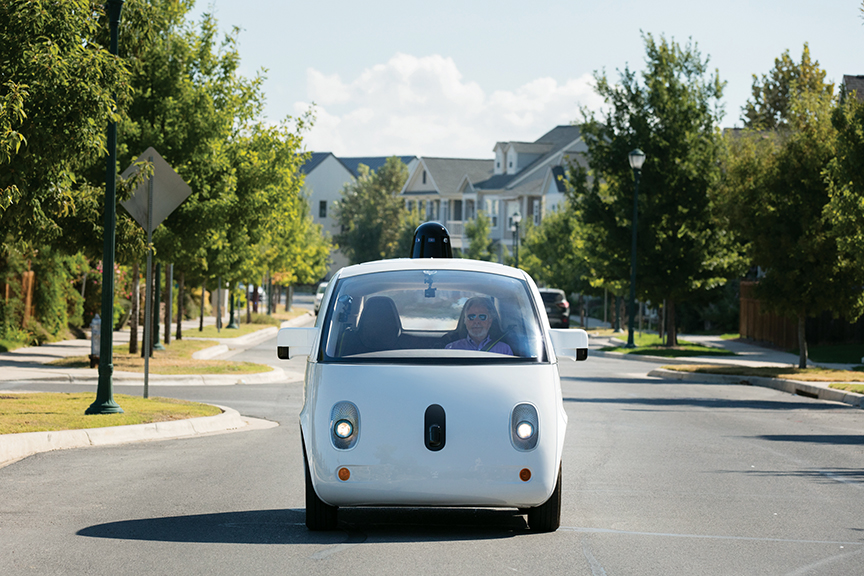
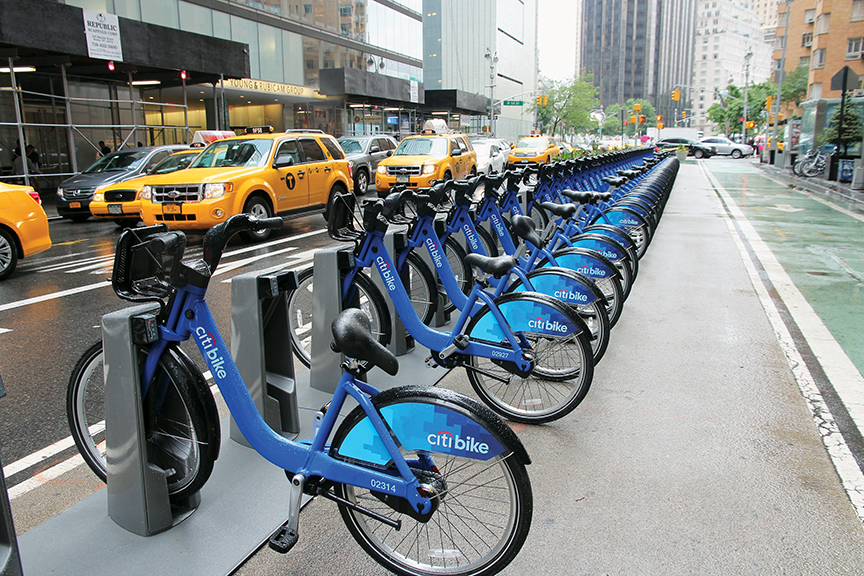
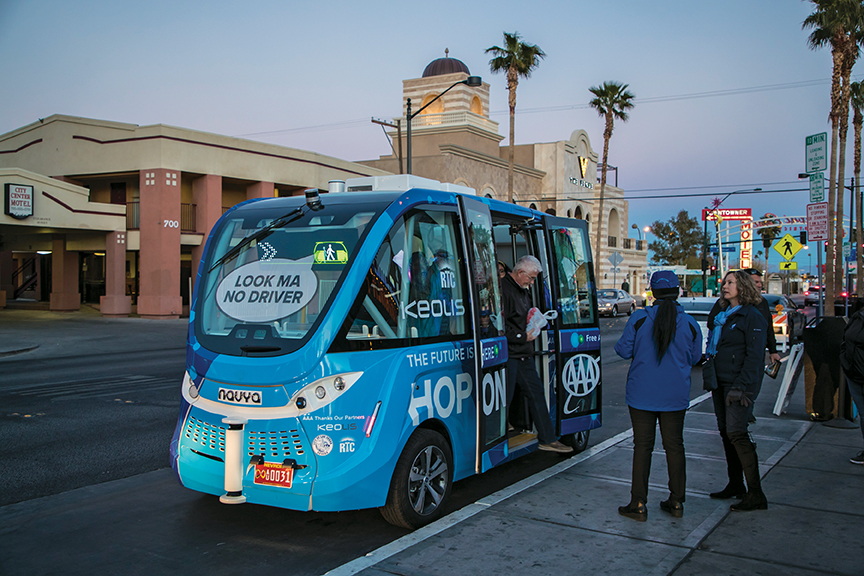
Even though many well-informed experts weigh in with varied opinions on potential transformations for real estate and housing, the only certainty is the change will be incremental, disruptive and far-reaching. “So, what impact will AVs and ride-sharing have on the housing market? We think a big one,” says Palacios. “A portion of the money once allotted to owning/renting a car should also free up for owning or renting a home.” As cars become more of a commodity, rather than a possession, costs such as fuel, maintenance and insurance will disappear along with loan/lease payments. “The boost to disposable income will be significant, once scaled,” says Palacios. Increases in productivity for individuals as well as industry are another expected result that will drive economic growth.
When the price of a parking space can exceed $300,000 or $400,000, even high-end consumers begin to examine the value of owning multiple vehicles. Conservative estimates suggest demand for parking could decline by 50 percent or more, freeing up extensive prime acreage. Already, in cities such as Chicago and Philadelphia, some former surface parking lots are being repurposed as mixed use or residential towers. Not only will the need for parking near prime buildings be eliminated, but overall, individual parking spaces will be smaller because autonomous vehicles do not require space to open and close doors when parked.
Some parking garages today are being designed with future adaptation to office or residential purposes in mind. Speaking at Trends 2018 sponsored by ULI Arizona, Veronica Siranosian, senior project manager with the global architecture and engineering planning firm AECOM Ventures, said they are recommending building new parking garages with flat floors and higher ceilings with the potential for HVAC and electrical.
Other changes she anticipates include mobility hubs that would incorporate bike share, drop off and pick up, automated shuttles and perhaps access to transit in one location. Additionally, building and street design will also have to consider added spaces for pick up and drop off.
Since most autonomous vehicles will be electric, the number of gas stations will also decline, further unlocking acres of what Palacios calls “prime real estate.” This reclaimed acreage will also improve the supply of homes in locations where inventories have historically been constrained, possibly dampening appreciation and enhancing affordability.
For a while, new construction in cities or close-in locations might impact interest in real estate in outlying suburbs, but in the long run demand for distant suburbs will reemerge as consumers realize they can use the time involved with longer commutes productively.
Overall, most expect to see a continued revival of cities. “What I am most excited about related to self-driving vehicles is society’s ability to envision better uses of the all-public space that is currently devoted to automobiles. In the future, I believe cities will have more green spaces, public parks, wider boulevards, and, perhaps, more affordable housing because we will be able to convert our garages and parking garages into fully functional living spaces,” says Uldrich.
“Get ready for more homes per acre, with the days of wide streets, massive driveways, and two-/three-car garages a thing of the past,” predicts Palacios. Higher density might be one potential outcome for residential real estate, but for consumers the result will be more livable square footage.
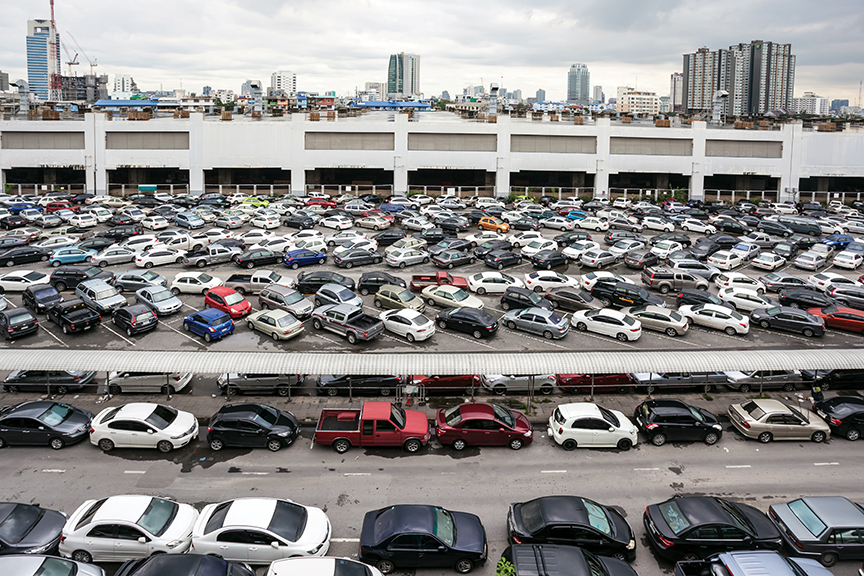

While fully autonomous driving seems many years away, planners and developers are already rethinking how new development needs to be planned. “We’re already seeing apartment developers shifting to zero parking. Innovative master-planned communities such as Florida’s new Babcock Ranch (eventually home to 50,000 residents) are already utilizing AV community shuttles, with the goal of having on-demand AVs that individual residents can use via smart-phone apps,” says Palacios.
For current homeowners, unused garage space will offer a range of opportunities to add amenities or create new uses from live/work options to multigenerational spaces.
For an aging population, new transportation options will be a game changer with the potential to alter where and how they live. Most projections envision a growing number staying in their existing homes rather than moving to assisted living.
The transportation revolution also makes a bullish case for the repair and remodel industry, and adaptation of homes for aging in place is only part of the push for renovations. The conversion of garages will also boost this real estate sector.
Two years ago, the idea of self-driving cars seemed more like science fiction than a near-term possibility. Today, despite the first traffic fatality from an AV, the push to develop this technology remains strong. Major automakers including General Motors and Ford as well as Waymo (a unit of Google’s Alphabet), Lyft and others continue to actively pursue the technology for both cars and trucks. A majority of automakers are moving toward semi-autonomous vehicles. GM, for example, has added hands-free cruise control to their Cadillac line along with vehicle-to-vehicle (V2V) communication with similarly equipped vehicles that alerts drivers to disabled vehicles, sudden stops or a crash ahead. It’s also a good example of how autonomous vehicles will eventually communicate with one another as well as with infrastructure. GM recently petitioned the federal government to begin testing cars without steering wheels and pedals.
The National Transportation Safety Board defines five levels of vehicle autonomy. Current vehicles fall into levels 2AV and 3AV. One anticipated transition to fully autonomous vehicles at Level 5 is dedicated travel lanes enabling them to trail closer together and communicate with each other and infrastructure. Hypothetically, this scenario would facilitate the movement of traffic, but some experts hazard that AVs will only increase congestion.
California and Arizona are on the forefront of the transportation revolution, incubating new technologies including potential use without a driver in the car. In late January, Waymo got a permit to operate as a Transportation Network Company in Arizona, which allows Waymo’s fleet of driverless minivans to pick up and drop off paying riders through a smartphone app or website. Other states including Texas, Ohio and Michigan are also proactively working on AVs.
Any look ahead also requires a look back at predictions that went wrong, including one notable projection, pegging the number of cellular phones at the end of the 20th century at just under a million. For driverless vehicles, estimates of the time frame for adoption might not hit the mark, but few would deny that transportation’s future will not involve steering wheels and brake pedals.
Active lifestyles are driving consumer demand for walking and biking trails, causing developers and urban planners to rethink transportation.
By Camilla McLaughlin
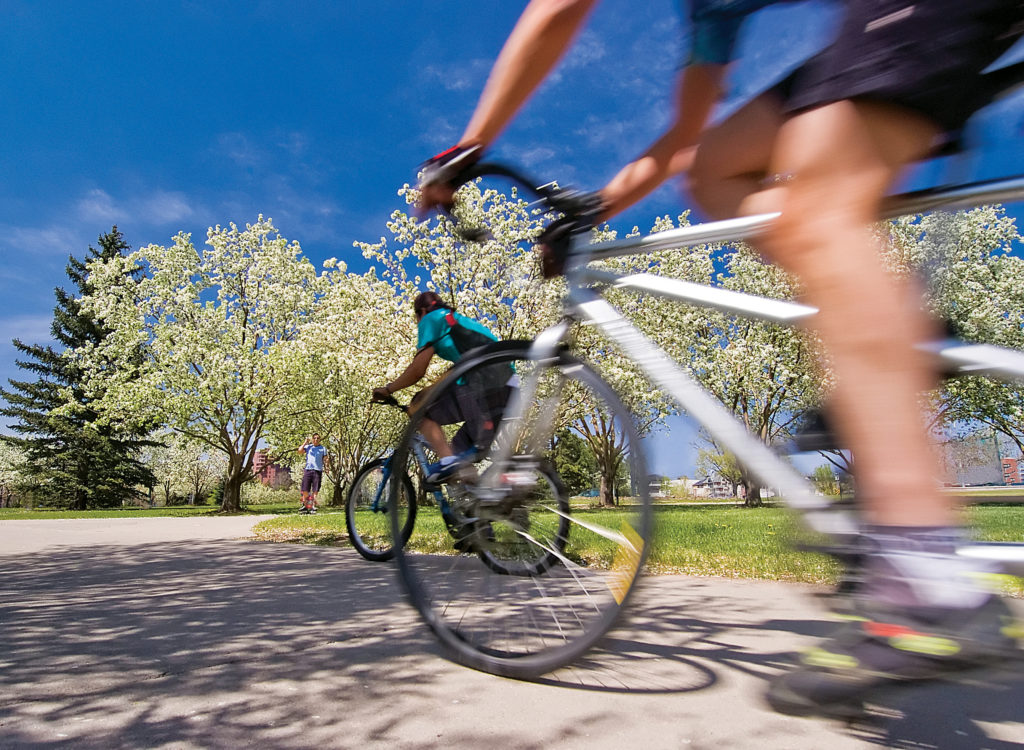
Photo courtesy Visit Denver; ©Stevie Crecelius
What will shape cities of the future? Infrastructure, say experts at the Urban Land Institute (ULI).
ULI and a number of urban planners expect new modes of transportation such as shared cars and self-driving vehicles to change everything in cities, from the number of parking spaces to traffic. But these options are only a small part of transportation’s new paradigm, which takes into account multiple modes of navigation, especially in urban centers. Already a number of cities are committed to this vision, and are developing infrastructure to diversify transportation. Fourteen cities have heavy rail; 28 have light rail, which is growing fastest in the Southwest; and rapid bus transit is a reality in 36 cities.
Now planners and developers are also looking closely at bicycling and walking, which they consider active transportation. Not only are cities building trails and safer roadways for bikes, but a new generation of offices, mixed-use communities, and even resorts, incorporate biking and walking into the lifestyle they offer. And developers and homeowners are discovering these amenities have a big payoff. According to ULI, studies show that direct access to trail, bike-sharing systems, and bike lanes positively impact property values. As an example, they point to homes within a quarter mile of the Radnor Trail, part of Philadelphia’s Circuit regional trail network, where values on average were $69,000 higher than other area properties.
“Bicycling has recently undergone a renaissance in locations across the world, with an increasing number of people taking to the streets by bike,” observed the authors of a new report on active transportation published by ULI.
Worldwide, two-wheeled vehicles have traditionally been an accepted means of transportation, but usage has skyrocketed in recent years. Transport London found cycling in the city recently reached its highest rate since it began keeping a record. Bicycles outnumber cars on the road in Amsterdam, with the number of local trips increasing by more than 40 percent since the 1990s. In Copenhagen, the first two phases of a 311-mile network of cycle superhighways have been completed. Right now these two completed routes connecting the city with suburbs have between 3,500 and 4,000 users per weekday.
In the U.S., bicycling and walking were not historically considered part of the transportation continuum, but infrastructure improvements and the addition of bikeways and walking trails such as the High Line in New York or the BeltLine in Atlanta are boosting interest and moving walking and biking into the transportation conversation. “Cities that are investing in bike infrastructure are seeing big increases in bike use,” said Ed McMahon, coauthor of “Active Transportation and Real Estate, The Next Frontier,” speaking at a panel on trail-oriented development at ULI’s spring conference.
There is good reason that walkable has become real estate’s newest mantra. According to ULI, 50 percent of U.S. residents say walkability is a top priority or a high priority when considering where to live.
Build It and They Will Come
U.S. Census Bureau data shows that the number of people who traveled to work by bike increased by roughly 62 percent between 2000 and 2014. But ULI found that rates generally exceed the national average when cities invest in bicycle infrastructure, including new configurations for bike lanes, an increased number of protected bike lanes, and trail systems.
It’s no accident that Portland, Oregon, has the highest bicycle commuting rate among large U.S. cities — 7.2 percent compared to the less than 1 percent on the national average. That is a 400-percent hike since 1990. Transit in that period only increased by 18 percent, while driving declined 4 percent. The catalyst was a 300-mile network of bike trails, bike lanes and bike boulevards. The cost in 2008 was approximately $60 million, about the same as a single mile of a four-lane urban freeway.
Minneapolis, where 4.7 percent of the residents commute by bike (the second highest rate in the U.S.), has a long-term goal of having 15 percent of citywide transportation be by bike, and ULI’s experts say that’s not an unrealistic goal. Copenhagen and Amsterdam have bicycle commuting rates exceeding 40 percent.
Portland and Minneapolis may be setting the pace, but a number of other cities including San Francisco, Washington, D.C., Philadelphia and Chicago report growing interest in biking, not just as a sport, but as a viable mode of urban transportation.
Banking on Biking
In recent years, the focus for planners has been transit-oriented development — mixed-use communities clustered around transit hubs. Some new communities are taking this a step further and adding active transportation, walking and biking, to their lifestyle focus. Hassalo on Eighth, a mixed-use project in Portland, Oregon, combines transit-oriented and trail-oriented development. Located near major bike routes and also with access to transit and light rail, it is the largest residential development in the city. With parking for 1,200 bikes, it also houses the largest bicycle parking facility in North America, open to both residents and area employees.
Bike amenities at Hassalo on Eighth are similar to those offered in a number of new communities across the country, and include on-site bike valet service, with bike tune-ups an option. Vending machines make parts for simple repairs readily available. And shower and locker room facilities will enable local bicyclists to change and shower after commuting.
In Atlanta, along the award-winning Atlanta BeltLine, a burgeoning 22-mile network of public parks, multiuse trails and transit facilities, new developments promoting a car-free lifestyle are springing up. Post recession, Ponce City Market, a mixed-use development in a historic warehouse adjacent to the Atlanta BeltLine, is the city’s largest redevelopment project. A walkway connects a new public plaza, the development and the trail, promoting access for both bikes and pedestrians. Jamestown Companies, the project’s developers, observed: “Ponce City Market’s direct connection to the BeltLine is one of the best amenities we have to offer our communities. It is not only an easy way to access the market’s amenities, it also provides our tenants with a great green space that connects them directly to growing neighborhoods.”
Many of the bike amenities at the Ponce City Market are shared by other new, trail-oriented communities. Five hundred spaces allow ample parking for residents and visitors in a secure facility. The development includes retail space and a large central food hall with venders and restaurants, which also makes it a destination on the BeltLine. A free service enables visitors to ride up to the building and leave their bikes with the entrance valet. Hallways and elevators are extra wide to accommodate bikes, so residents can maneuver bikes around the properties. And a bike workroom makes it easy for residents to repair bikes.
In Minneapolis, MoZaic, a mixed-use office building, was developed facing the Midtown Greenway, a 5.5-mile commuter trail that connects to the Uptown Transit Center. To ensure access, the developer, the Ackerberg Group, worked with a nearby development and local officials to construct a bicycle and pedestrian bridge to the Midtown Greenway.
The Flats at Bethesda Avenue in Bethesda, Maryland, a mixed-use development on the site of a former parking lot, is located along an 11-mile Capital Crescent Trail, with runs between Washington, D.C., Bethesda and Silver Spring, Maryland, and is one of the busiest trails in the U.S. with roughly a million users per year. Residents have the option of commuting to work via bike. Additionally, on-site retail establishments attract bicyclists and pedestrians, and the building includes bike parking for the public. An on-site public garage offers a bicycle drop off so commuters can drive to The Flats at Bethesda Avenue, drop off a bike, park in the underground garage and then complete their commute on their bike.
Resorting to Bikes
When Charles Fraser built Sea Pines, bike paths were part of the plan, and it was a bit revolutionary at the time. Today, thanks to a groundswell from residents, those original 15 miles have expended to 112 miles all over Hilton Head, South Carolina. Savvy resort developers understand the value bike amenities and trails can bring, and new resorts often are making walking, hiking and biking as important an amenity as golf.
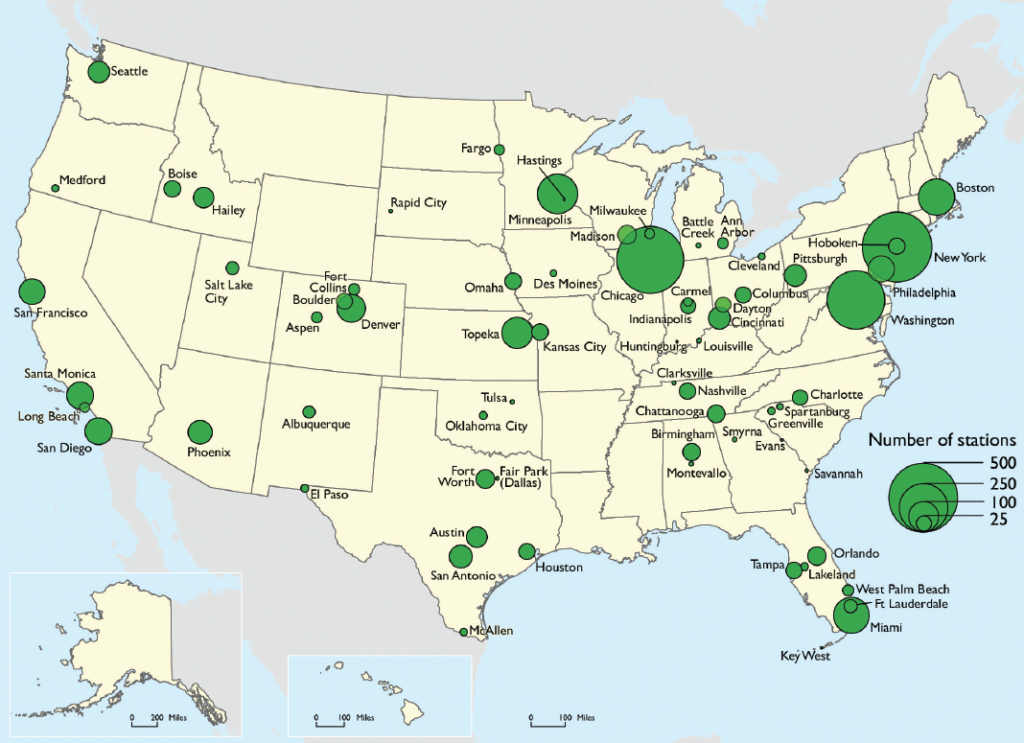
The number of bike-share stations in a given area is depicted here. A total of 46 bike-share systems operate the 2,655 stations in the U.S. For a fee, users can grab a bike at any docking station and then return the bike to another station in the system.
Source: U.S. Department of Transportation, Bureau of Transportation Statistics, Intermodal Passenger Connectivity Database (as of Feb. 2, 2016)
No Bike, No Problem
Another catalyst for bike infrastructure and trail-oriented development comes from bike-share programs. Anyone who has walked by bike-sharing stations in New York or Washington, D.C., might think this is just another way for tourists to get around the city. But the data and anecdotes tell a different story. Not only are shared bikes a catalyst boosting the number of riders in a city, but they also fill an important gap in the transportation continuum — that last mile between train, subway or parked car to a planned destination. And indications are that bike sharing also pays off with heightened home values. For example, according to ULI, homes in Montreal saw an average increase of $6,123 (U.S.) after the installation of local bike-share stations.
Boulder, Colorado, is not a place where one would expect to see bicycles as an alternative to cars, especially when you take the weather and the terrain into consideration. Yet, Boulder B-cycle, which launched five years ago, is one of the densest bike-sharing programs in the country when measured in terms of stations per capita. “We saw nearly 85,000 trips in 2015, which was close to a 100-percent increase over the previous year’s trips,” says Kevin Bell, marketing and communications director for the program. One-way trips especially have increased, and Bell says people typically use them in concert with commuting, where they will park their car and then use the bikes for quick errands around town during the day. The biggest challenge, Bell says, has been to have people understand that bike share is different than bike ownership.


